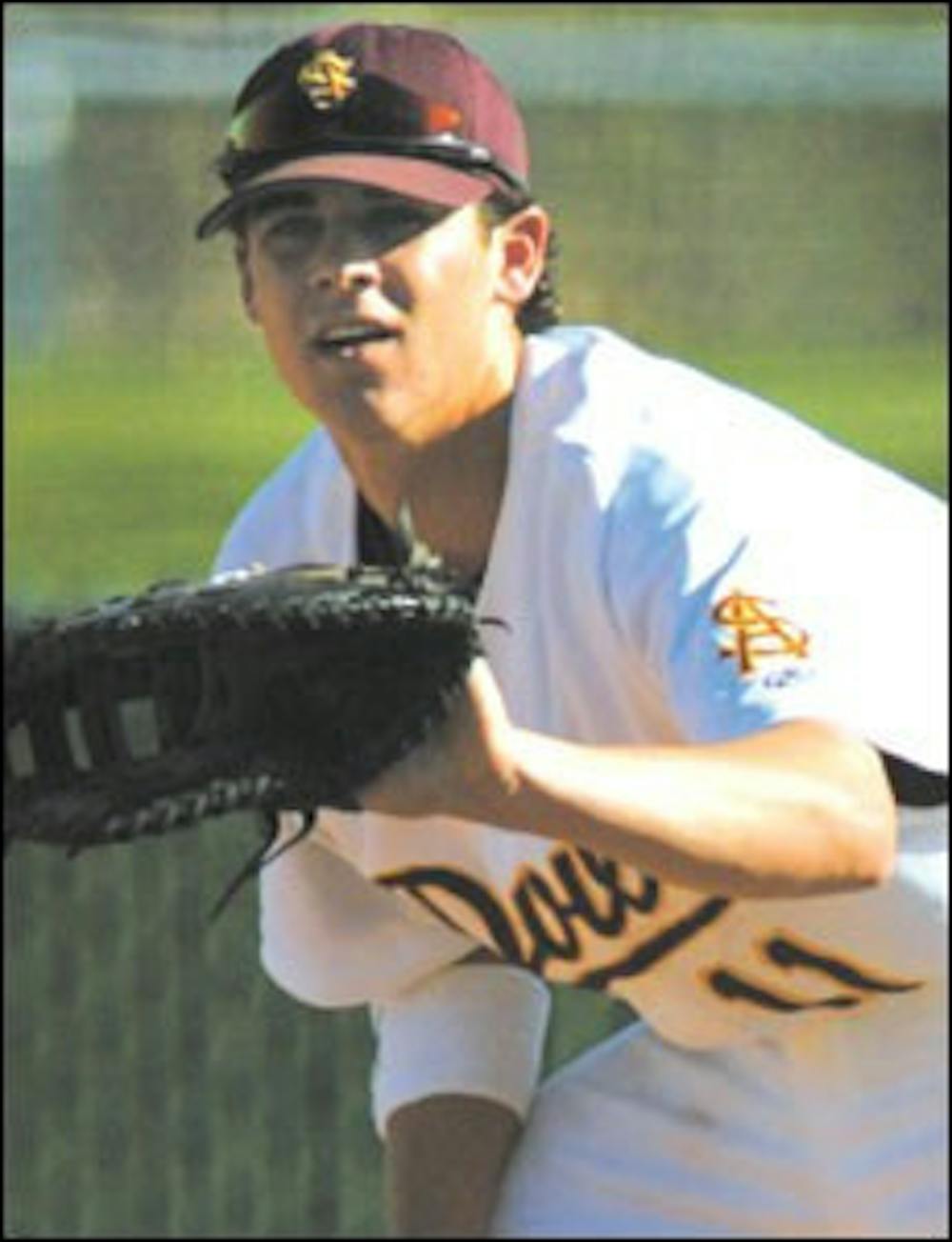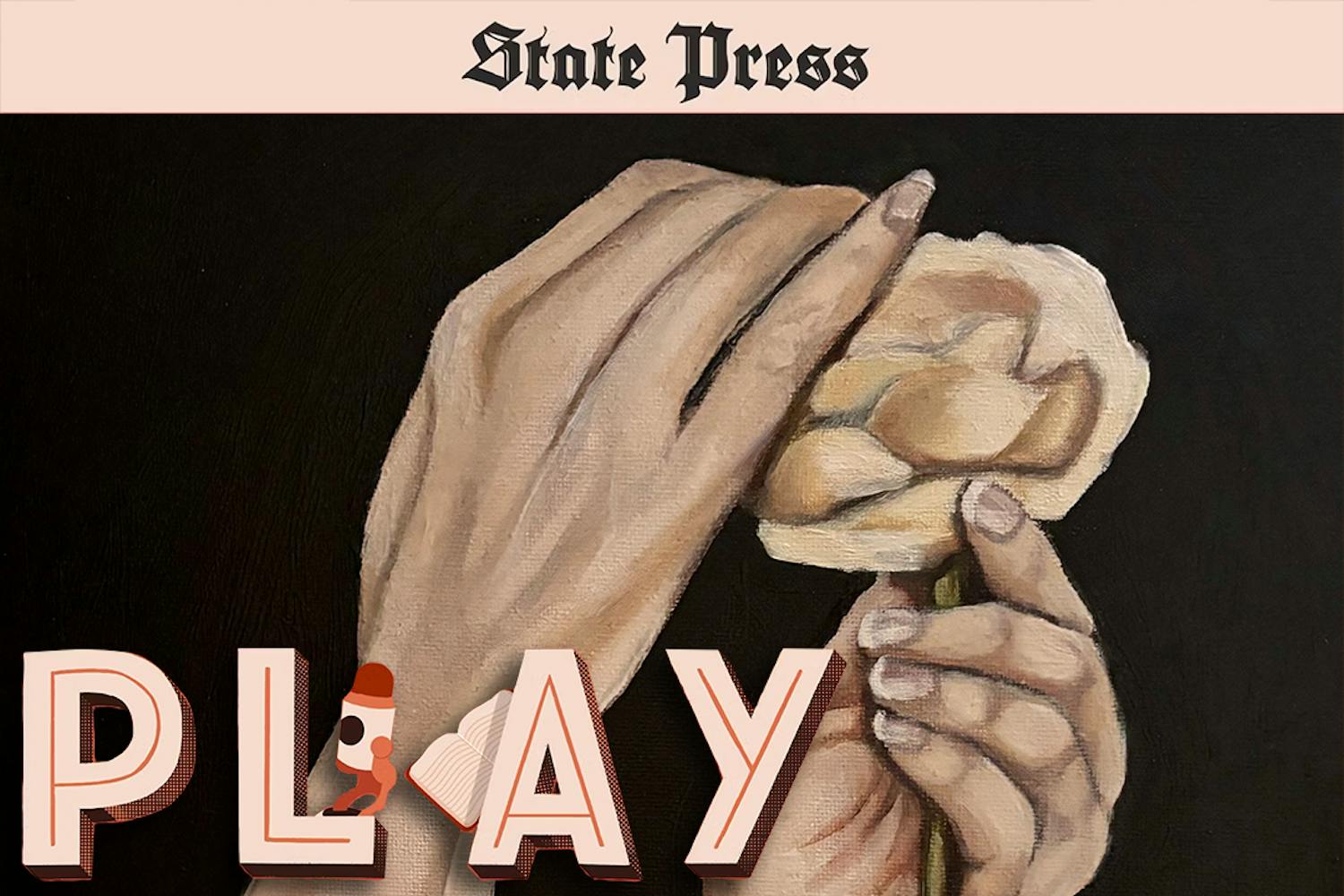A college baseball team may win over 40 games and display an ability to compete against one of the nation's toughest schedules, but in the end all anyone remembers is the postseason.
In 2004, the ASU baseball team amassed an impressive 41-18 record that included series wins over Tulane, Florida State and East Carolina as well as the regular Pac-10 competition. But the Sun Devils were knocked out of the NCAA tournament for the third time in four years at Fullerton, Calif. earlier this month, keeping them from the College World Series for the sixth-straight season.
Although success at a program like ASU is often judged by whether the team makes the College World Series, it would be unfair to label the season a complete failure.
The 2004 Sun Devils were a team that had lost 12 players from the team's super regional squad the year before, fielded at least four freshmen in the lineup more than half the season and had only two returning pitchers on the entire staff.
For all its youth and inexperience, ASU had a national seed in the NCAA tournament -- given to only eight teams in the country -- thanks in large part to a projected ratings percentage index of No. 3 in the country.
"Every weekend we had a chance to win two out of three," head coach Pat Murphy said. "When you're playing a difficult schedule with 70 percent new players, to be a No.1 seed was good."
Murphy admitted that the team likely should have entered a bid to host a regional, something the team opted not to do because Packard Stadium renovations had yet to be finished.
"Inside of me personally, I was crushed," Murphy said when he found out the team's tough regional draw. "If [Packard] was ready, that would not have been an issue. There was no way that I thought that we would end up in Cal State. In hindsight it may have been a mistake."
With the exception of a 4-8 skid at home at the beginning of conference play, ASU consistently won games, if not series, all season long. The Sun Devils' biggest test came during that stretch in which the team's young bullpen was exposed, as well as a struggling offense.
"The players knew something had to change," Murphy said. "I don't think it was one thing specifically."
The players responded by winning 17 of their last 22 games. However, the Sun Devils' choice to not host a regional led to one of the most difficult regional draws for the nationally seeded team.
ASU had to play at Cal State Fullerton, the team's graveyard two out of the last three seasons. Fullerton itself was one of the hottest teams in the country, having won 21 of its last 25 games heading into the tournament.
A first-round 15-5 loss to Pepperdine did not help matters as the Sun Devils were dispatched on the second day in a 5-0 loss to Fullerton.
It was a bitter end to what had been, for the most part, an overachieving season for the young ASU team.
Surprises
With much of the team's production coming from first-year players, it is hard to pick just one from the group.
Freshman reliever Zechry Zinicola provided the team a huge boost to the bullpen at the end of the season, tying the team's record for saves in a season by a freshman with eight.
Freshman centerfielder Colin Curtis, first baseman Joe Persichina and freshman Seth Dhaenens all made significant contributions as well. Unquestionably, junior college transfer pitcher Jason Urquidez was the best of them all.
Urquidez compiled an impressive 12-3 record in with a 3.41 ERA and was the team leader in strikeouts, innings pitched and ERA.
Urquidez's signature performance came against Rice ace Jeff Niemann on Feb. 22, in which Urquidez out-pitched last year's national pitcher of the year for a complete game 3-1 victory. The only run scored came on a two-out single in the bottom of the ninth inning.
Disappointments
Aside from the team's poor placement in the regionals, this season's biggest disappointment had to be the performance of junior left fielder Jeff Larish.
Larish came into the season as a national player of the year candidate and seemed to be a lock for the first round of this year's MLB draft. Murphy said that it was that pressure that ultimately affected Larish, more so than junior shortstop Dustin Pedroia, who had many of the same accolades but still performed well.
"I think they both were affected by the draft," Murphy said. "Pedroia was still probably going to be picked high, but Larish was going to be picked really high. When you're trying to hit home runs, that's very difficult."
Larish suffered from an injured wrist for much of the season and was unable to match the numbers he produced his sophomore year [.372, 18 home runs, 95 RBI and .697 slugging percentage].
It was not until the final quarter of the season that Larish finally started to produce on a consistent basis for the Sun Devils. Larish's average did not reach above .300 until May.
What ASU missed the most was his power. Compared to the 38 extra-base hits he contributed the season before, Larish was only able to hit 24, seven of which were home runs.
MVP
Without any debate whatsoever, Pedroia was the best player for the Sun Devils nearly all season.
Pedroia finished in the top five in the Pac-10 in eight offensive categories and was the team leader in nearly every offensive statistic.
Perhaps Pedroia's only disappointment was his play near the end of the season when Murphy said he began to "run out of gas."
Then again, Pedroia's version of running out of gas included a regional in which he hit .364 and was named to the regional all-tournament team.
Over the course of the season, Pedroia failed to get a hit in only 11 of the team's 59 games. The season was good enough to earn him All-American honors with all four of the major college baseball publications.
Now, Pedroia will attempt to take his skills to the Major Leagues as a second-round pick of the Boston Red Sox.
Reach the reporter at matthew.schubert@asu.edu.




